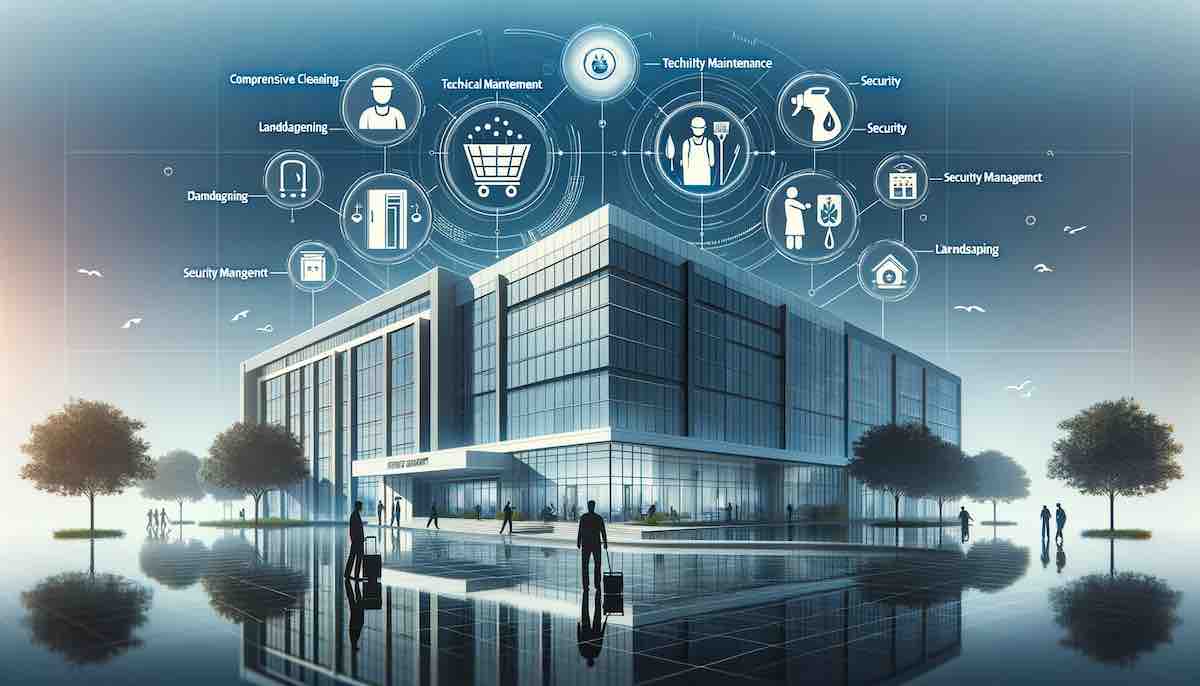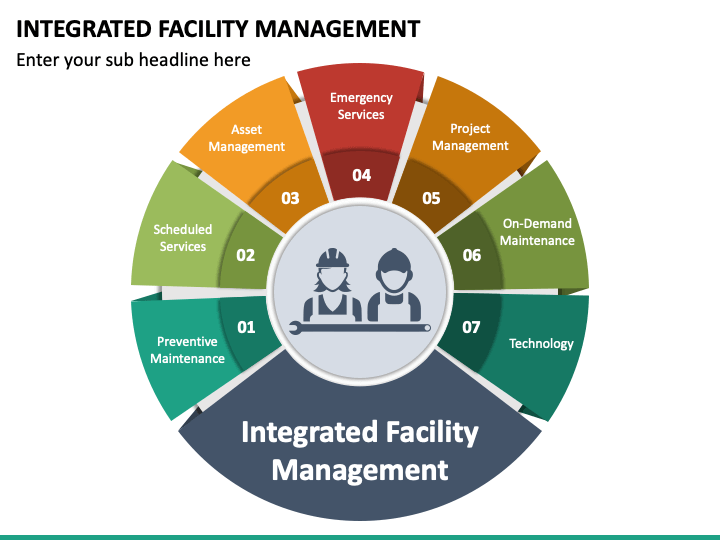Comprehending the Necessary Principles of Facility Management for Modern Companies
The Necessary Overview to Facility Management: Methods for Success
Facility monitoring plays a vital function in the overall success of an organization, offering as the backbone that supports security, effectiveness, and performance. The nuances of effective center monitoring extend beyond mere logistics and require an extensive understanding of both qualitative and quantitative metrics.
Comprehending Facility Monitoring
What constitutes efficient center monitoring? Effective center management includes the control of different organizational functions to guarantee that built environments are risk-free, effective, and helpful to performance. Facility Management. It integrates the principles of organization, engineering, and style management to produce a smooth operational flow within a company
Key elements of center administration consist of space preparation, upkeep management, and conformity with health and wellness and security policies. Area preparation focuses on maximizing the use of physical resources to support business goals, while maintenance management guarantees that facilities are kept in optimal problem, maximizing life expectancy and reducing functional prices. Conformity with legal and governing criteria is vital, as it safeguards the organization against prospective responsibilities and enhances its reputation.
Additionally, effective center monitoring depends on the calculated use of innovation, such as Building Management Solution (BMS) and Computer-Aided Facility Administration (CAFM) tools. These innovations assist in real-time tracking of building systems and simplify maintenance processes. Inevitably, a detailed approach to facility management not only advertises functional performance yet likewise promotes a positive atmosphere for staff members and visitors alike, driving total organizational success.
Key Methods for Optimization
Enhancing center administration needs a tactical method that straightens operational methods with business purposes. To achieve this, the first vital method is the application of integrated technical options. Using advanced software application systems permits for real-time monitoring of center procedures, helping with data-driven decision-making and improving general effectiveness.
Second of all, regular assessments of center performance are essential. Conducting routine assessments and audits makes it possible for facility supervisors to determine locations that need improvement, guaranteeing that resources are allocated effectively. This proactive approach aids in lessening downtime and enhancing solution delivery.
An additional vital strategy is cultivating partnership throughout divisions. By motivating open communication between groups, facility managers can better straighten their strategies with business goals, bring about improved operational synergy. In addition, involving staff in training programs promotes a society of liability and boosts their ability to add to optimization initiatives.
Enhancing Security Procedures
Strengthening security protocols is essential for developing a protected atmosphere within centers. A thorough security procedure not only safeguards staff members and site visitors however likewise improves operational effectiveness. To attain this, facility managers must perform routine threat evaluations to recognize prospective dangers and ensure that suitable steps remain in place.
Training and education are essential components of reliable safety and security procedures - Facility Management. Employees ought to get ongoing training in emergency situation treatments, devices handling, and personal safety procedures. Routine drills, such as fire evacuations or lockdown procedures, foster experience and readiness amongst team
Furthermore, clear interaction networks need to be established to report safety concerns immediately. This consists of developing an obtainable system for workers to voice possible dangers or cases without worry of reprisal. Leveraging modern technology can boost safety actions; for instance, carrying out surveillance systems and accessibility controls assists check facility activities and restrict unauthorized entry.
Last but not least, conformity with regional regulations and industry criteria is non-negotiable. Regular audits and reviews of safety protocols make certain positioning with present regulations and ideal methods. By focusing on these approaches, facility supervisors can grow a culture of safety that safeguards all stakeholders and eventually adds to the organization's success.
Improving Work Environment Setting

Ergonomic considerations are important to lessen physical pressure and discomfort. Facility Management. This includes providing flexible furnishings, correct lights, and sufficient room for movement. These changes can lead to reduced absenteeism and enhanced task satisfaction
Looks play a vital duty in shaping the work environment atmosphere. Using shade psychology, natural illumination, and greenery can foster a promoting and inviting atmosphere. Attentively made spaces can increase creative thinking and boost total health.
Furthermore, motivating staff member engagement through comprehensive decision-making procedures can boost the feeling of possession and belonging. Gathering comments on workplace improvements and involving workers in the design procedure can cause a more customized environment that meets their demands.
Finally, advertising wellness initiatives, such as wellness programs and relaxation spaces, can further add to a helpful work environment society. By concentrating on these approaches, facility supervisors can properly enhance the workplace environment, driving both employee fulfillment and business success.
Determining Success in Facilities
Measuring success in facility management calls for a thorough technique that examines both try this out qualitative and measurable metrics. Quantitative metrics usually consist of essential performance indicators (KPIs) such as area application rates, energy consumption, upkeep expenses, and tenancy degrees. These metrics supply a clear photo of operational effectiveness and financial performance, permitting facility supervisors to identify areas for improvement and criteria versus market requirements.
Qualitative metrics, on the various other hand, focus on individual fulfillment and employee interaction. Surveys and comments mechanisms can evaluate just how well the facilities satisfy the requirements of owners, aiding to analyze the overall workplace environment. This facet is critical, as a completely satisfied workforce is typically linked to enhanced productivity and retention rates.
To successfully determine success, center supervisors need to also think about integrating technology, such as building monitoring systems and data analytics devices, to accumulate and analyze appropriate information. Regularly evaluating both sets of metrics permits a much more balanced sight of efficiency and notifies calculated decisions. Ultimately, a successful center management approach hinges on a dedication to continual renovation, making certain that both operational efficiencies and user click site contentment are prioritized.
Verdict

Facility monitoring plays a critical role in the total success of a company, offering as the backbone that supports productivity, performance, and security.Key components of facility administration include space planning, maintenance administration, and compliance with health and safety regulations.Additionally, efficient facility administration relies on the strategic usage of technology, such as Structure Administration Equipment (BMS) and Computer-Aided Facility Monitoring (CAFM) tools. Ultimately, a detailed method to facility monitoring not only advertises operational performance however additionally promotes a favorable environment for site visitors and employees alike, driving general organizational success.
Inevitably, an effective facility administration approach hinges on a dedication to continuous enhancement, guaranteeing that both operational effectiveness and customer complete satisfaction are focused on.